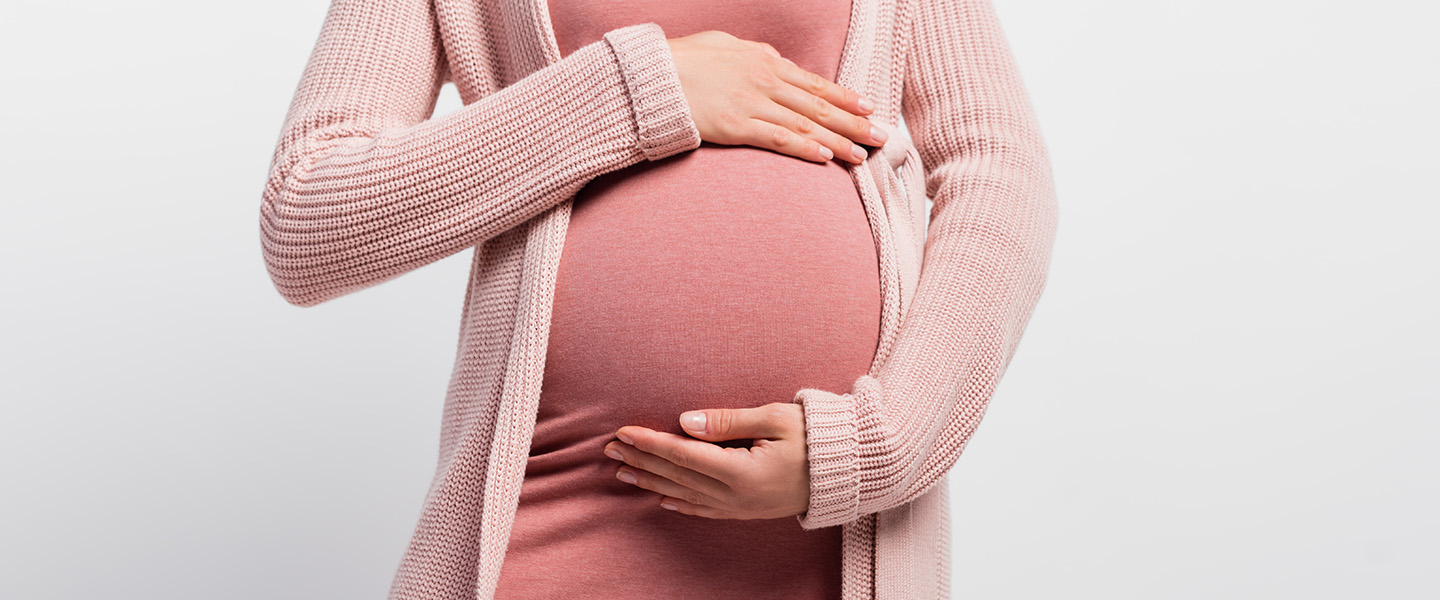Study Provides Unprecedented View of Profound Brain Changes Over the Course of Pregnancy
Study Provides Unprecedented View of Profound Brain Changes Over the Course of Pregnancy

A new brain imaging study of a single healthy 38-year-old woman has given neuroscientists an unprecedented view of the profound ways the brain changes during pregnancy. Among other things, the results suggest various ways in which the brain changes in anticipation and support of behavioral adaptations that challenge all new mothers following childbirth.
A neuroscientist, Elizabeth R. Chrastil, Ph.D., of the University of California, Irvine, worked with a team of colleagues, including co-team leader and 2017 BBRF Young Investigator Emily G. Jacobs, Ph.D., of the University of California, Santa Barbara, to document changes in Dr. Chrastil’s brain while she was pregnant. What made the study unique was the fact that Dr. Chrastil underwent 26 MRI brain scans and paired blood draws, the first taking place 3 weeks prior to conception, then throughout pregnancy and up to 2 years after she gave birth to a healthy baby boy.
This supplied the research team with data that opens a window on how, where, and to what extent brain structures change during human pregnancy. Prior studies on such changes have been based on “before” and “after” brain scans. The new research marks the launch of the Maternal Brain Project, an international effort to map the brain across pregnancy in a large and diverse population.
Although it is well known that pregnancy is a time of profound hormonal and physiological changes in women, the neural changes unfolding in the maternal brain throughout gestation are not well studied in humans. This gap in knowledge has potentially immense implications. Worldwide, 140 million women become pregnant each year. In each woman, pregnancy sets off a series of 100-fold to 1,000-fold increases in hormone production, notably including estrogen and progesterone. These hormones have a neuromodulating impact—that is, in addition to their other bodily effects, they drive significant reorganization of the central nervous system.
It has been understood that such reorganization necessarily involves neuroplasticity, the ability of nerve cells to alter their patterns of connection. Plasticity is a fundamental aspect of brain biology, although its extent was largely unappreciated until the dawn of the era of sophisticated brain imaging. The new study adds a critical chapter to what is known about just how plastic the brain can be. It revealed the extraordinary level of plasticity in the brain during pregnancy, a degree of plasticity that may only be exceeded in children and adolescents, whose brains are still in the process of forming and maturing.
Among the processes that gestational hormone level increases are known to drive are neurogenesis, or the birth of new neurons; dendritic spine growth (points on nerve cells at which other neurons connect); the proliferation of microglia, the immune cells of the brain; myelination, or the process that provides axons with a fatty coating that insulates them; and remodeling of astrocytes, “helper” cells that clear excess neurotransmitters, stabilize and regulate the blood-brain barrier that insulates the brain from toxins, and promote synapse formation. These changes at the cellular level in the brain across pregnancy are thought to be most pronounced in circuits that promote maternal behaviors.
Precision imaging and related analytic tools enabled the team to make a variety of critical observations about changes in Dr. Chrastil’s brain during her pregnancy. They saw “widespread reductions” in the thickness of the cerebral cortex as well as in the volume of cortical gray matter. Gray matter consists of the neurons and other cell-bodies of the brain, as opposed to white matter, which mostly consists of axons and dendrites that connect brain cells. Importantly, the team observed these reductions occurring “in step” with pregnancy as it advanced week by week, and along with the concomitant rise in sex hormone production.
The team also observed pregnancy-related remodeling in subcortical structures (areas deeper in the brain’s interior, “beneath” the cortex), including the ventral diencephalon, caudate, thalamus, putamen, and hippocampus. High-resolution images revealed specific volume reductions in certain layers of the hippocampus and para-hippocampal cortex.
In contrast with widespread decreases in cortical and subcortical gray matter volume, the team found increases in white matter microstructural integrity throughout the brain, which signifies greater integrity of affected white matter tracts. This phenomenon was observed to increase as the weeks of pregnancy passed, though the first two trimesters.
Some of the observed brain changes persisted at 2 years postpartum (the gray matter reductions) while others reverted to pre-pregnancy levels just after childbirth (e.g., markers of white matter integrity).
“Together, these findings reveal the highly dynamic changes that unfold in a human brain across pregnancy,” the team reported in Nature Neuroscience. This demonstrates the brain’s capacity for extensive neural remodeling “well into adulthood,” they said. Here the team was implicitly comparing the degree of plasticity they observed during pregnancy with the well-known remarkable plasticity of the brain during childhood and adolescence.
Interestingly, the team noted that similar precision imaging studies have captured dynamic brain reorganization during the monthly menstrual cycle. These also “underscore the powerful role steroid hormones have in shaping” the brain. Still, endocrine changes across pregnancy “dwarf those that occur across the menstrual cycle.” This, the team says, highlights the critical need to comprehensively map the brain’s response to the unique hormonal state during pregnancy.
The current study was based on a single healthy woman. The team looks forward to repeating the procedure with a large and diverse cohort of women to determine the degree to which the current findings are generally the case in pregnant women. The neuroanatomical changes observed in a more diverse study “may have broad implications,” they said, for understanding individual differences in parental behavior, vulnerability to mental health disorders (in mothers), and patterns of brain aging.
The team speculates that the observed broad decrease in gray matter volume in the brain during pregnancy “may reflect ‘fine-tuning’ of the brain by neuromodulatory hormones in preparation for parenthood.” It is possible, for instance, that the magnitude of gray matter reductions in areas of the brain important for social cognition corresponds with levels of parental attachment to the child. “Deeper examination of cellular and systems-level mechanisms will improve our understanding of how pregnancy remodels specific circuits to promote maternal behavior,” they noted.
A broader study population for a study like theirs will enable researchers to ask not only whether the changes they observed in one participant are generally the case, but also whether deviations from an established norm of pregnancy-related brain changes can be linked to processes related to risk for mental illnesses, including postpartum depression.



